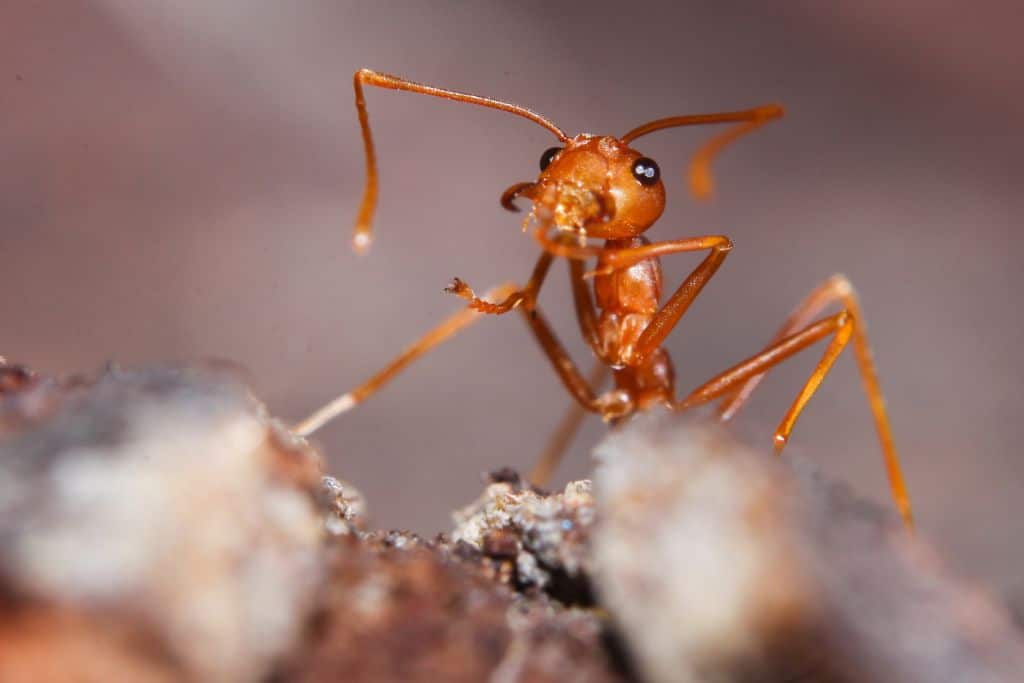The spread of the red fire ants, considered among the world’s most destructive and costliest invasive species, could have serious health and economic repercussions across the continent, a new study has warned.
—
The red fire ant, one of the most destructive invasive species in the world, has established in Italy and could rapidly spread elsewhere in Europe, bringing huge social, environmental, and economic repercussions, researchers warned.
The non-native species, also known by the scientific name Solenopsis invicta, has become established near the city of Syracuse in Sicily, where researchers identified 88 nests across 5 hectares (12 acres) in late 2022. Genetic analysis indicates the species could have come from China or the US.
The confirmation came in a study published in the scientific journal Current Biology and led by the Institute of Evolutionary Biology (IBE), a joint centre of the Spanish National Research Council (CSIC), and the Pompeu Fabra University (UPF). Researchers behind the analysis concluded that the species could potentially spread and establish in approximately 7% of Europe, where about half of urban areas have an ideal climate for the species to thrive. This, they warned, could have serious economic consequences on the continent.
Besides having a venomous sting, which can lead to small, burning pustules and in some rare cases even severe or sometimes fatal allergic reactions, red fire ants are particularly feared for their environmental and economic impact. The species eats seeds and plant roots – risking damaging entire crops – and even electrical equipment such as cars and computer wires. Its presence can also result in the displacement or complete eradication of some native species such as native ants and other surface-active arthropods.
Native to South America, the red fire ant has spread in much of Mexico, the Caribbean, China, Taiwan, Australia, and the US. In the latter alone, the species – considered the fifth most expensive invasive species in the world – results in an estimated economic loss of approximately US$6 billion each year.
Only New Zealand has successfully eradicated fire ants, while Australia, which invests millions of dollars every year, is still battling an infestation that has now spread across more than 600,000 hectares (1.5 million acres). The states of Queensland and New South Wales allocated $61 million and $95 million respectively over the next four years to the National Fire Ant Eradication Program, which began in 2017 and will run for 10 years with the aim to remove the serious pest from Australia.
“Coordinated efforts for early detection and rapid response in the region are essential to successfully manage this new threat, before it spreads uncontrollably,” warned Roger Vila, principal investigator at the IBE’s group of Butterfly Diversity and Evolution, who led the study.
“The public could play a key role in the detection of S. invicta, considering that it is frequently found in urban and adjacent areas. It is possible to detect this ants due to its painful stings and the characteristic mounds of their nests, although confirmation of an expert is required,” explains Mattia Menchetti, an INPhINIT ”la Caixa” pre-doctoral researcher at IBE and the study’s first author.
In the past few decades, globalisation has enhanced international trade and the movement of people, goods, food products, and animals, resulting in the mobility of various species outside their native habitats. Extreme weather events like floods, droughts, and hurricanes have further accelerated migration patterns. Climate-induced changes in land cover and atmosphere also boosted their proliferation.
Invasive species such as the red fire ant represent a huge threat to societies. According to new research published last week, the more than 3,500 invasive species introduced by human activities to regions and biomes worldwide pose a serious threat to human health, food security, and biodiversity, costing the global economy $423 billion each year, new research suggests.
You might also like: Are Humans an Invasive Species?


















